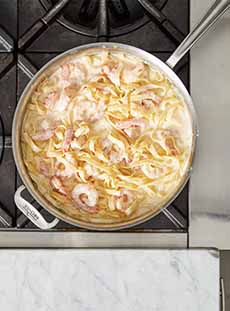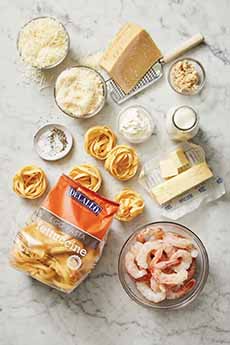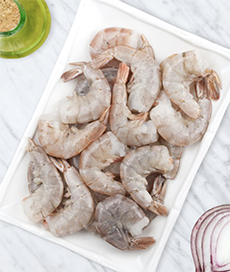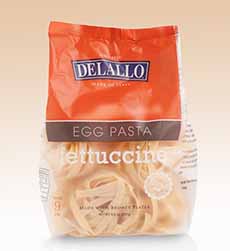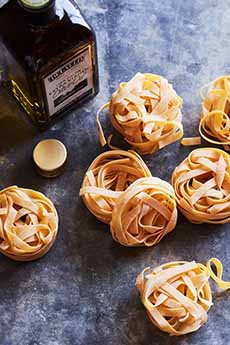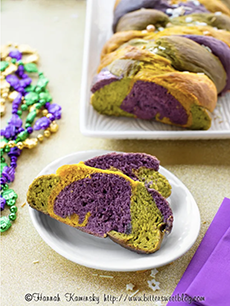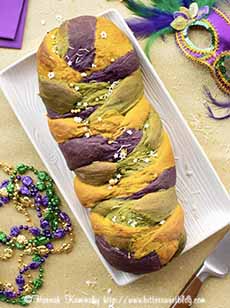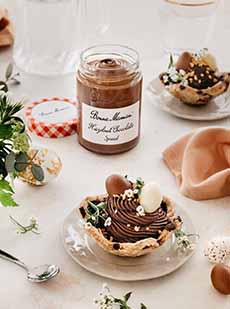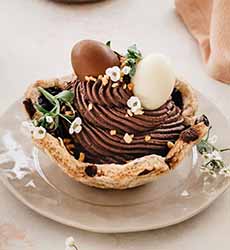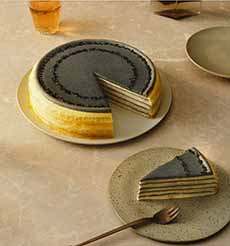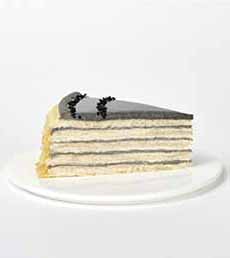|
Cheese Bits of Riverbank, California, has captured our attention with its innovative line of Cheese Bits “bite size premium snacking cheeses.”
We love innovation, and Cheese Bits has it covered with three product lines, all under the umbrella of Mozzamini Cheese Bits.
The artisanal, all-natural, premium snacking cheeses are made with milk from local Northern California dairies.
Cheese Bits come in three versions: Pearls, Sticks, and Tots.
It’s not that there haven’t been mozzarella pearls (perlini), sticks, and tots (cielegeine, boconcini) out there.
But Mozzamini has expanded the flavor palette. In addition to the traditional Original (plain), there are:
Strawberry
Wasabi
Wood Smoked
And, a point of difference: They are made of scamorza, not mozzarella.
Both are made from from curds that are stretched (a.k.a. pasta filata). With scamorza, however, the curds are smaller so as to retain less moisture. Here’s more about it.
The product line is made from Northern California milk, and are gluten-free.
Imagine what fun you can have sprinkling them over foods to delight family and friends.
While all four flavors are available in Pearls, Sticks, and Tots, oday we focus on the Pearls because they are elegant and tasty fun.
They’re not exactly bite-size. Those would be the Sticks and Tots.
Rather, a few of these little pearls might count as a “bite.” So let us explain:
THE SIZES OF MOZZARELLA BALLS
We’re presenting this size comparison to explain the relative size of Mozzamini Pearls.
Growing up, we only knew of one size of mozzarella: the one-pound ball carried by our supermarket. But over time, U.S. cheesemakers and importers diversified the line.
The specific timeline for when different sizes of mozzarella balls were introduced is not be well-documented. Variations in size are often driven by culinary trends, consumer demands, regional preferences, and the creativity of artisanal cheese makers.
Over time, the range of sizes expanded. Today you can find a variety in upscale markets, Italian markets, and cheese specialty stores, including:
Perlini, or little pearl, is the smallest size of mozzarella ball
Perle/Nocciolini, pearl or peanut size
Ciliegine, cherry tomato size
Bocconcini, golf ball-size
Ovoline, egg size
Larger balls, half pound and one pound sizes
HOW TO USE MOZZAMINI PEARLS
Note that while these pearls, made of mozzarella, can be melted, the allure is as a garnish, offering added visual, flavor, and textural appeal.
For Breakfast
Cereal: Use Original or Strawberry atop hot or cold cereals.
Pancakes, Waffles, French Toast: Garnish with Strawberry.
Eggs: Garnish with Original, Wasabi, or Wood Smoked.
For Lunch & Dinner
You can marinate the plain pearls in EVOO, balsamic, and herbs to use as a garnish. Or use them, along with the flavored pearls, “as is.”
Garnish: green salads and grain bowls/grain salads
Garnish: grain or vegetable sides
Garnish: pasta or soup
Fusion: top fried rice, oysters, tacos, whatever
Edgy: Sprinkle on sushi or sashimi
Creative: Make a mini Caprese salad appetizer with halved cherry or grape tomatoes, shredded basil, and EVOO in a coupe glass
Plate Garnish: Scatter over the plate or over the entrée mains themselves
For Dessert
Garnish: fruit salad or a sliced fruit plate
Edgy: Sprinkle Strawberry pearls on ice cream, sorbet, or pudding
Very Edgy: chocolate pudding/mousse with Wasabi pearls
WASABI PEARLS: A NATIONAL AWARD WINNER
One of the four pearl flavors, Wasabi, was honored with a prestigious Silver Medal at the most recent American Cheese Society Judging and Competition (2023), arguably the most prestigious cheese events in the U.S.
There, panels of expert judges evaluated more than cheeses 1,400 entries in various categories, scoring them taste, texture, aesthetics, and overall excellence.
Wasabi Pearls was entered in the category of International-Style With Flavor Added – All Milks.
First prize in the category (Gold Medal) went to the cumin-flavored Gouda from Oakdale Cheese.
Second prize (the Silver Medal) was shared with Buholzer Brothers Dill Havarti from Klondike Cheese Co. and Cervelle de Canut, an American version of the French-inspired fresh goat cheese spread with shallots, chives, pepper and vinegar, made by Zingerman’s Creamery.
GET YOUR CHEESE BITS
> Check the store locator for retailers near you.
MORE TO DISCOVER
> The history of scamorza cheese.
> The history of mozzarella cheese.
> The history of cheese.
> The different types of cheese: a photo glossary.
|
|
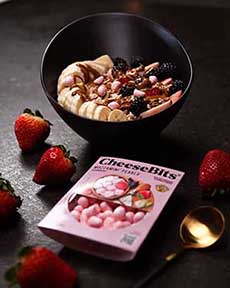
[1] Start at breakfast with Strawberry or Original Pearls on your cereal, or any flavor on your eggs (all photos © Cheese Bits).
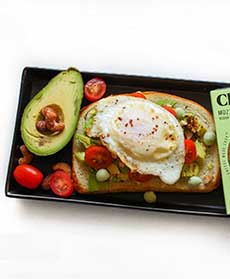
[2] Garnish breakfast eggs with Original, Wasabi, or Wood-Smoked Pearls.

[3] Pizza toast can be fun with browned Pearls of your flavor of choice.

[4] Ready for cocktails? How about crab canapés and Wood Smoked pearls.
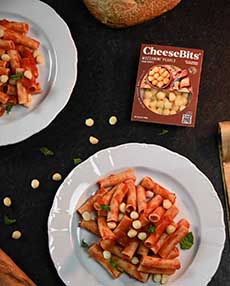
[5] Sprinkle Pearls atop your favorite pasta.
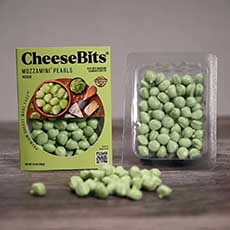
[6] Pearls are packaged in plastic trays.
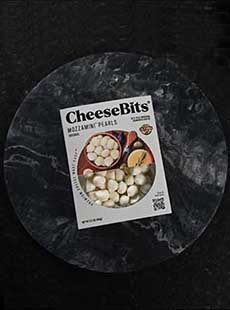
[7] Original Pearls.
|
